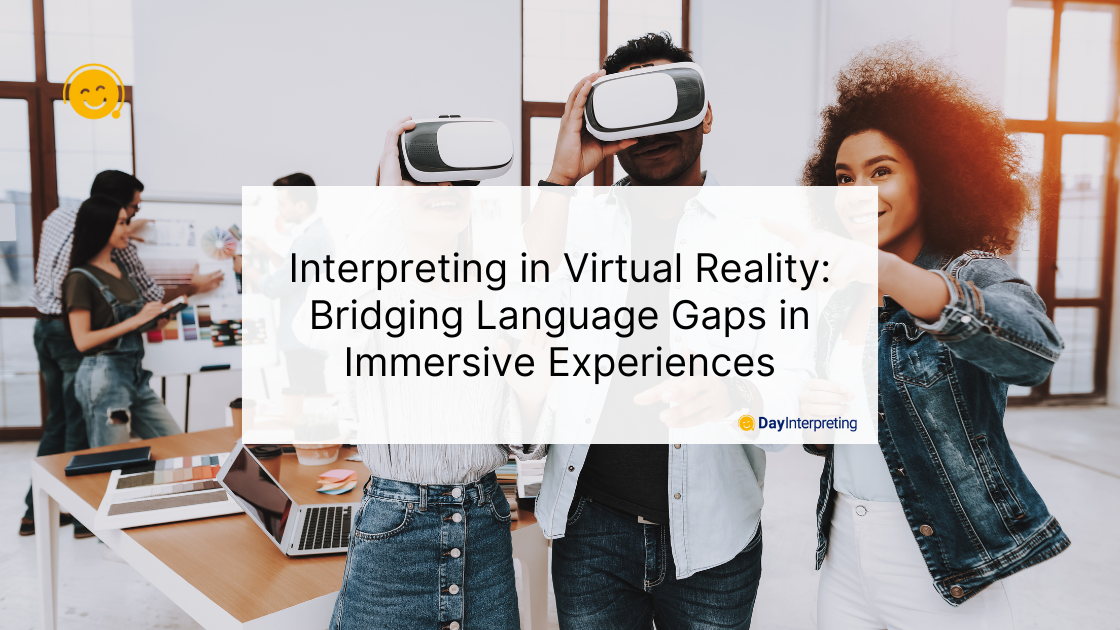Virtual Reality (VR) has revolutionized the way we engage with digital content, offering immersive and interactive experiences that transcend borders and languages. As VR continues to expand its reach, the need for effective interpreting, both in-person and through Virtual Remote Interpreting (VRI), becomes increasingly evident. In this article, we will explore the evolving landscape of interpreting in virtual reality, highlighting the challenges it presents and the innovative solutions being developed to make immersive experiences accessible to global audiences.
The Growth of Virtual Reality
Virtual reality has come a long way since its inception, with VR headsets becoming more affordable and technologically advanced. This widespread accessibility has led to a surge in VR content across various domains, including gaming, entertainment, education, and healthcare. However, as creators seek to engage with a global user base, overcoming language barriers is crucial to ensuring that VR experiences are inclusive and accessible.
Challenges in Interpreting for Virtual Reality
Interpreting in virtual reality, whether in-person or through VRI, presents unique challenges that differ from traditional interpreting contexts. Here are some key challenges:
Immersive Environment
VR environments are three-dimensional and dynamic, often with intricate visuals and audio. Interpreters must navigate these immersive settings while providing real-time interpretation, making it more challenging to maintain focus and accuracy.
User Interaction
In VR, users interact with objects, characters, and interfaces. Interpreters must ensure that their interpretations align with the interactive elements in the virtual environment to enhance user engagement.
Real-time Communication
Some VR applications, such as collaborative design tools or virtual meetings, demand real-time interpretation to facilitate communication between users who speak different languages. This requires interpreters to keep pace with the rapid exchange of information.
Cultural Sensitivity
Like translation, interpreting in VR should consider cultural norms and sensitivities to ensure that users from diverse backgrounds feel comfortable and respected.
Solutions in Interpreting for Virtual Reality
To address these challenges, the interpreting industry is adapting and evolving. Here are some solutions and strategies being employed:
Immersive Interpreter Training
Training programs are being developed to prepare interpreters for the unique demands of VR interpreting. This includes practicing interpretation in simulated VR environments to build familiarity with the medium.
Context-Aware Interpreting
Interpreters are increasingly relying on context-aware technology to enhance their work in VR. This technology can provide visual cues or prompts to help interpreters navigate the virtual environment effectively.
Real-time Interpreting Technology
VRI platforms are incorporating real-time interpreting technology, leveraging AI and machine learning to assist interpreters in delivering accurate and timely interpretations during VR interactions.
Cultural Sensitivity Training
Interpreters working in VR are receiving cultural sensitivity training to ensure that their interpretations respect the cultural diversity of users within the virtual environment.
Case Studies
Let’s examine some real-world examples of how interpreting in virtual reality has enriched immersive experiences for global audiences:
Virtual International Conferences
Virtual conferences and trade shows are incorporating VRI services to enable attendees from around the world to participate and network in real-time, breaking down language barriers and facilitating international collaboration.
Collaborative VR Design Tools
Companies are using VRI to bridge language gaps in collaborative VR design tools. This enables designers and engineers from different countries to work together seamlessly on complex projects.
Educational VR Experiences
Language learners are benefiting from interpreters who guide them through immersive educational VR experiences. These interpreters help learners understand the content and navigate virtual environments effectively.
Conclusion
Virtual reality has opened up new frontiers in digital engagement, offering immersive experiences that transcend geographical and linguistic boundaries. As VR continues to gain popularity, the importance of effective interpreting, both in-person and through Virtual Remote Interpreting (VRI), cannot be overstated. Interpreting in virtual reality comes with unique challenges, including the immersive environment, user interaction, real-time communication, and cultural sensitivity. However, the industry is adapting by providing immersive interpreter training, context-aware interpreting technology, real-time interpreting solutions, and cultural sensitivity training.
By addressing these challenges and embracing innovative solutions, interpreters are making it possible for users from diverse linguistic backgrounds to fully engage in the wonders of virtual reality. As VR evolves, so too will the strategies and technologies employed to ensure that interpreting services are seamlessly integrated into the immersive experiences of this emerging digital frontier.





0 Comments